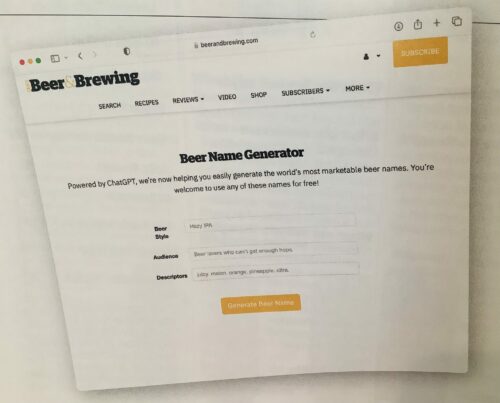I like cool architectural designs and home interiors. I am also a fan of nature photography. Both of which are easily manipulated or entirely created by Artificial Intelligence.
Don’t count me in the AI enthusiasts club but don’t count me in the scared of it club either. Mostly because both of those clubs seem to be talking not about AI today but about AI in some nebulous future. Because currently, AI be janky as hell.
How does this relate to beer you might ask. There have already been AI generates beer recipes and probably some AI labels as well. Some beer writers have toyed with tasking AI to write a beer piece.
But all that is predicated on earlier content. Much like this very blog, AI must draw content. I need a brewery to brew a new beer, or for there to be a festival or a silly gadget otherwise what do I highlight or comment on? And that is what AI needs.
For example, you can ask AI to design a taproom layout. All it can do is maybe (if it is actually learning) use a size dimension alongside examples of other taprooms it has scraped from the web to create an amalgam of a layout. It cannot take into account so many things. AI cannot know how customers in your area will behave in it. It cannot incorporate nods or Easter eggs about the community. It cannot find a happy medium between two owners.
The only way AI can be effective is if you plug so many variables into it that you won’t get an actual response OR you plug in a generic ask and then work from the response as a mere base. And either way, guess who will actually do the work? An actual person.
There are a lot of cool things that computers can do but they still cannot be an actual person.
Peel the Label is an infrequent series with no photos or links. Just opinion.




